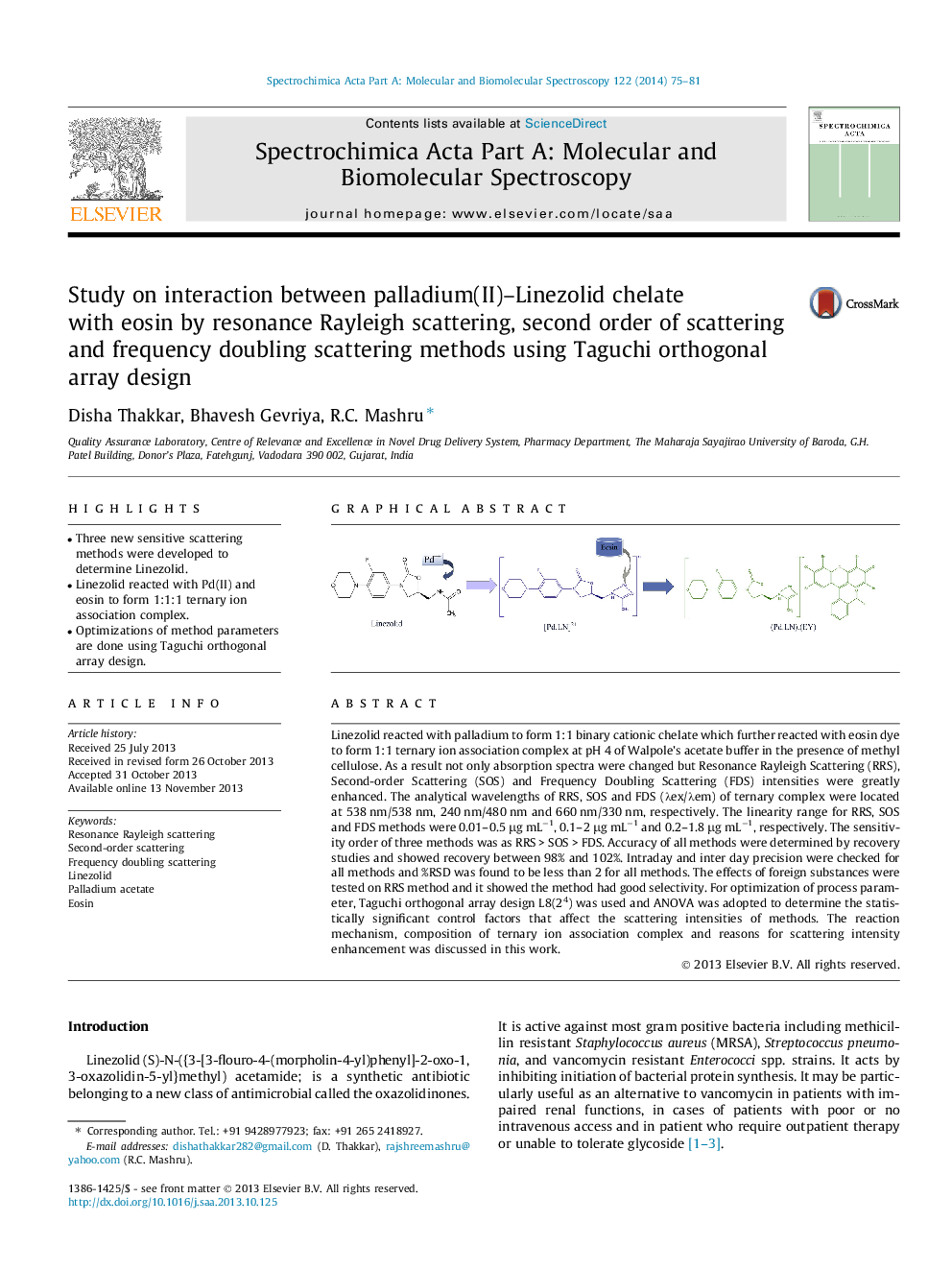| کد مقاله | کد نشریه | سال انتشار | مقاله انگلیسی | نسخه تمام متن |
|---|---|---|---|---|
| 1230218 | 1495246 | 2014 | 7 صفحه PDF | دانلود رایگان |

• Three new sensitive scattering methods were developed to determine Linezolid.
• Linezolid reacted with Pd(ІІ) and eosin to form 1:1:1 ternary ion association complex.
• Optimizations of method parameters are done using Taguchi orthogonal array design.
Linezolid reacted with palladium to form 1:1 binary cationic chelate which further reacted with eosin dye to form 1:1 ternary ion association complex at pH 4 of Walpole’s acetate buffer in the presence of methyl cellulose. As a result not only absorption spectra were changed but Resonance Rayleigh Scattering (RRS), Second-order Scattering (SOS) and Frequency Doubling Scattering (FDS) intensities were greatly enhanced. The analytical wavelengths of RRS, SOS and FDS (λex/λem) of ternary complex were located at 538 nm/538 nm, 240 nm/480 nm and 660 nm/330 nm, respectively. The linearity range for RRS, SOS and FDS methods were 0.01–0.5 μg mL−1, 0.1–2 μg mL−1 and 0.2–1.8 μg mL−1, respectively. The sensitivity order of three methods was as RRS > SOS > FDS. Accuracy of all methods were determined by recovery studies and showed recovery between 98% and 102%. Intraday and inter day precision were checked for all methods and %RSD was found to be less than 2 for all methods. The effects of foreign substances were tested on RRS method and it showed the method had good selectivity. For optimization of process parameter, Taguchi orthogonal array design L8(24) was used and ANOVA was adopted to determine the statistically significant control factors that affect the scattering intensities of methods. The reaction mechanism, composition of ternary ion association complex and reasons for scattering intensity enhancement was discussed in this work.
Figure optionsDownload as PowerPoint slide
Journal: Spectrochimica Acta Part A: Molecular and Biomolecular Spectroscopy - Volume 122, 25 March 2014, Pages 75–81